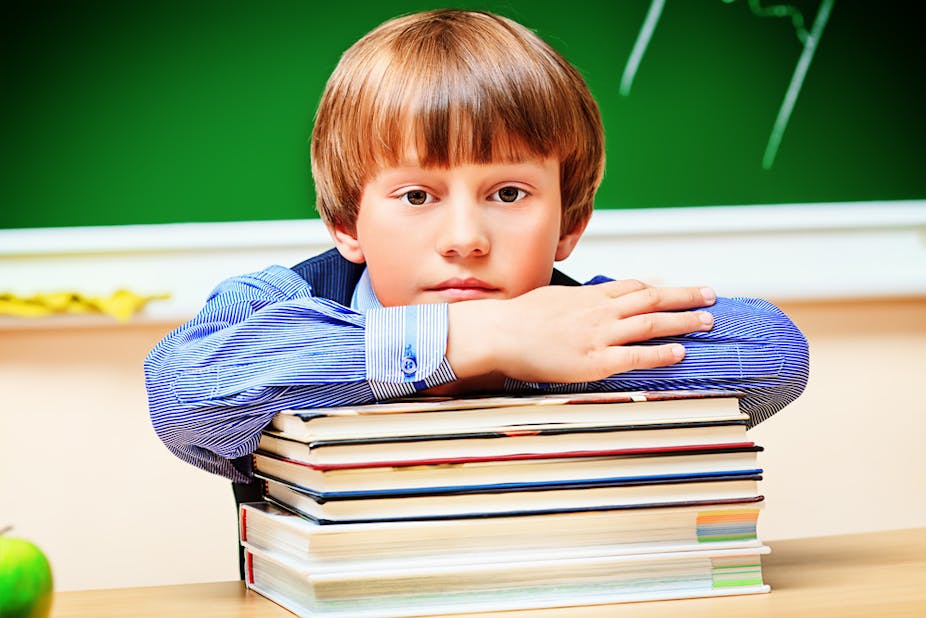Like many of the English-speaking market democracies, Australia and, perhaps to a lesser extent the US, like to think of themselves as merit-based societies in which everyone has a “fair go”. This idea led to the creation of school systems that guaranteed all children, no matter their origins, access to a publicly funded education. By creating educational and economic opportunity, this arguably helped the emergence of strong middle classes in each country.
But the current reality is of education systems that are socially stratified and full of inequalities. There is much evidence to suggest that our schools, rather than promoting equity, are effectively serving as engines of inequality. This is true of schools in other countries that have embraced choice and competition to organise education.
Social stratification in the Australian education system is sharper than in most countries. Students from wealthy, privileged backgrounds tend to go to high-fee, independent high schools. Kids from low-income, disadvantaged backgrounds tend to go to government high schools.
Data from the Organisation for Economic Cooperation and Development (OECD) show that the proportion of kids who go to a socially mixed or average school is lower in Australia than in most other comparable countries. Our schools are more socially stratified than in Canada, New Zealand or even the UK. The stratification is essentially the same as in the US.
This is a significant problem because social segregation has very large negative consequences for students. And these effects compound inequalities associated with family background.
As we have shown in Australia (here and here), the average level of achievement of a kid from a low socioeconomic status (SES) background in a low SES school is roughly three years behind a high SES kid in a high SES school. For any given student, attending a low SES school versus a high SES school amounts to more than a year’s difference in academic performance. Clearly, where one goes to school in Australia matters … a lot.
The negative outcomes are related to inequalities in funding, resourcing, teacher shortages and learning environments. We have shown that there are very large inequalities in teacher shortages and the educational resources available to low and high SES schools in Australia. Australia is one of only three OECD countries where high SES schools have substantially better resources. The other two? Chile and Mexico.
Another shocking inequality is access to academic curriculum. For example, we have shown that only 10% of low SES schools in metropolitan Perth offer advanced curriculum in the traditional, core subjects of literature, maths and sciences. For students from these communities, access to traditional academic subjects depends on applying to a non-local high school without any guarantee of acceptance. Or it means paying fees to go to a private school.
Students who reside in more affluent neighbourhoods, on the other hand, are guaranteed free access to this high-stakes curriculum. Does this seem fair? And in the context of shortages in the financial, engineering and health professions, does it seem sensible?
Looking overseas can provide insight about possible solutions. Australia and Canada have similar demographics, economies and levels of income inequality and poverty, but schools are much more socially integrated there than here. Not surprisingly, while privileged students perform the same in both countries, disadvantaged students and schools in Australia perform substantially worse on international achievement tests. The result is that Canada consistently outperforms Australia on international league tables of student achievement like PISA.
The Canadian case is proof that educational inequalities in Australia are not natural or normal. Rather, the differences are the result of the specific sets of policies that each country has embraced.
These are policies related to funding, choice and competition. Rather than create a system in which schools compete with each other for students and funds, Canada (and to an even larger extent, Finland) has tried to ensure that all schools are good schools.
Ensuring that all schools are good schools requires equitable distribution of resources, funds and students from a range of social backgrounds. It requires minimising the number of residualised, high-poverty schools and the number of super-funded, socially elite schools.
As shown by Canada and Finland, this can be accomplished by creating a strong public education system in which all students, regardless of where they live or how much money their parents earn, are guaranteed access to high-quality academic education.
Equity and integration can also be achieved in countries with a tradition of private schooling, as shown by New Zealand, the UK and the Netherlands. How do they do this? By creating publicly funded private schools that do not charge fees.
Perhaps it is time for a new paradigm in Australian schooling, one in which all students are given the opportunity to meet their full potential and choice does not come at the expense of equity. Other countries are doing it, so we know it is possible.

